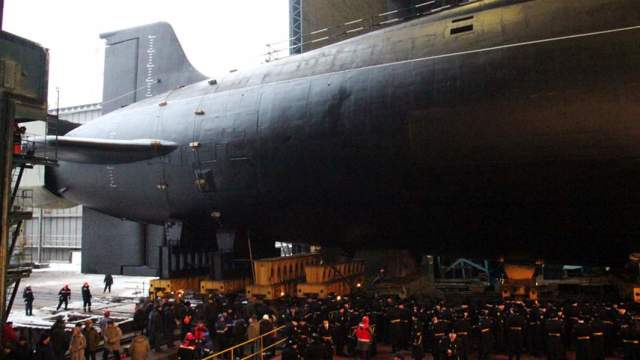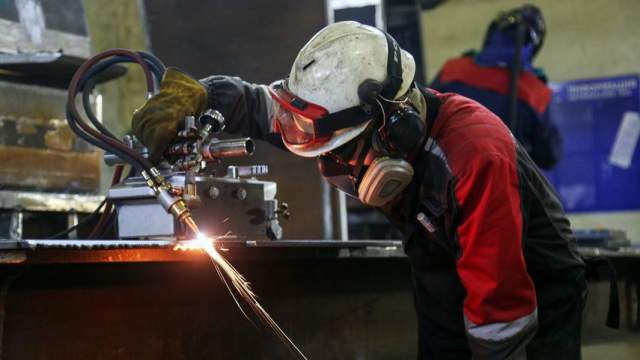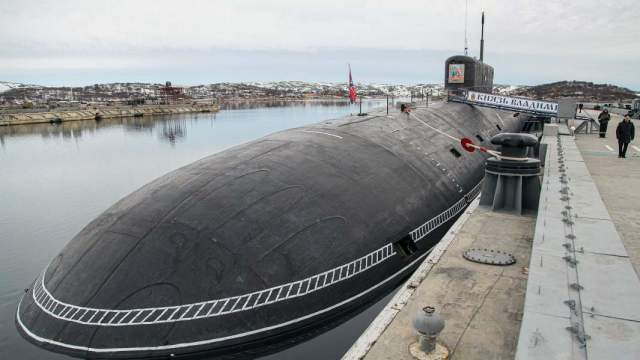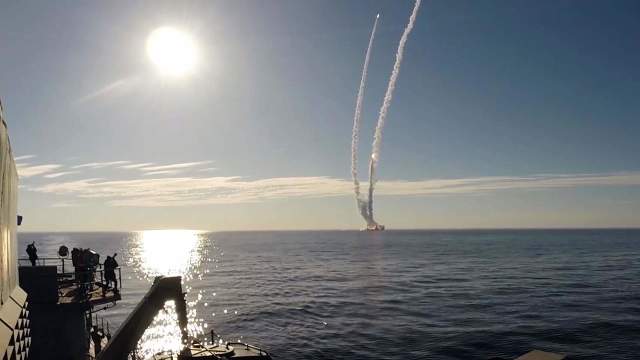It will replace the "Mace" and will have to overcome a promising enemy missile defenseThe Russian Defense Ministry is finalizing the formation of tactical and technical requirements for a new sea-based intercontinental missile, sources in the military department told Izvestia.
It will be designed for promising underwater nuclear missile carriers and should eventually replace the Mace in service. Earlier, the commander-in-chief of the Navy, Admiral Nikolai Evmenov, said that the new missiles would have to be guaranteed to overcome any missile defense system and provide high accuracy with an increased flight range. Experts note that the characteristics of the missile will largely determine the appearance of the next generation submarines.
Underwater perspectives
Currently, work is being completed on the formation of tactical and technical requirements for a fundamentally new underwater intercontinental ballistic missile, sources in the Russian Defense Ministry and the military-industrial complex told Izvestia. The novelty should become the main armament of nuclear-powered strategic missile submarines of the next generation.
When the documents are approved and agreed with the customers and performers, the developers will proceed directly to the formation of the appearance and design of the newest strategic complex. As one of the interlocutors explained to Izvestia, the carrier submarines themselves will be designed based on the design of missiles. The work will be based on the principle of "submarine for rocket".

Photo: RIA Novosti/A. Petrov
Image source: iz.ru
Earlier, the commander-in-chief of the Navy, Admiral Nikolai Evmenov, reported on the revision of the requirements for strike capabilities and stealth actions of submarines. This will require the development of promising submarines with fundamentally new tactical and technical characteristics. According to the admiral, in order to ensure the fulfillment of strategic-level combat missions, the submarine's missile system with a new ballistic missile must be guaranteed to overcome a promising missile defense system of any enemy and provide high accuracy requirements with an increased flight range from remote areas of the World Ocean.
— As a rule, the development of weapons and submarines goes in parallel, — the former commander of the submarine, Rear Admiral Vsevolod Khmyrov, told Izvestia. — But armament designers have always worked at a faster pace. And already the designers who were engaged in the creation of carriers were refining them so that they could use these weapons.
The creation of nuclear submarines is a continuous process, military historian Dmitry Boltenkov told Izvestia.
— They serve a certain number of years, and science and technology do not stand still, — he noted. — Therefore, it is necessary to think about the boats of the new generation right now, to conduct design developments. Accordingly, new missiles will be needed, which will serve in 25-30 years. New materials and technologies are emerging. The creation of such a serious weapon that ensures our security is a continuous process: one missile was made, launched, handed over, and we already have to think about the next one, which will replace it in 10-15 years.

Photo: RIA Novosti/Pavel Lviv
Image source: iz.ru
According to expert estimates, the Bulava, which is in service with submarine missile carriers, will be able to serve for another 20 years, but it needs to start developing a future replacement now.
— The boat is built around a rocket, — Dmitry Boltenkov explained. — There is a typical example with R-39 missiles. The military described to the developers the necessary parameters of the product, forgetting to specify the weight and dimensions. It turned out to be a huge monster. And then a boat of project 941 "Shark", the largest in the world, was built for this giant-sized rocket. Another example is that for a long time they could not create a rocket for the Project 955 "Borey" missile carriers. The lead ship of this series could not enter service because of this.
Developers have to solve a number of difficult tasks. Firstly, the boats should be as small as possible, this gives less visibility. Accordingly, the rocket should also have a relatively small size. With new technologies, it is possible to make a rocket with the same characteristics, but with reduced dimensions. In addition, the future missile will have to overcome missile defense, and not today's, but a promising one. This is a rather difficult task that needs to be dealt with right now.
— There are no special problems to build a submarine. But with the creation of a new rocket, as it turns out, there is a problem. The Bulava rocket could not be brought to condition for a long time, there were many unsuccessful launches. It depends on the rocket what kind of mine it will be. And all dimensions of the boat already depend on it, — Dmitry Boltenkov noted.
Photo: RIA Novosti/press service of the Ministry of Defense of the Russian Federation
Image source: iz.ru
Princely Series
The most modern strategic missile submarines to date are submarines of projects 955 "Borey" and 955A "Borey-A". They should remain the basis of Russia's naval strategic nuclear forces until the middle of this century. The lead ship "Yuri Dolgoruky" was laid down in 1996. Then it was assumed that there would be Bark missiles on board.
However, then it was decided to adapt this and the following ships of the series for the promising Bulava at that time, which was being developed by the Moscow Institute of Thermal Engineering. It is unified with the land-based Topol-M missile. Creating a marine version required a lot of time and labor. Many test launches were emergency. However, in the end, the "Mace" was successfully finalized and launched into the series in 2018.
It is considered one of the most advanced solid-fuel ballistic missiles. The rocket is capable of covering a distance of over 9 thousand km. It includes three marching stages, a combat load dilution stage and from three to six individual guidance combat units. Each unit is directed to its target and carries a thermonuclear charge with a capacity of 150 kilotons. One submarine missile carrier can carry 16 missiles on board, so in one salvo it can send up to 96 combat units to the target.
The lead ship of the 955th project "Yuri Dolgoruky" joined the Navy in 2013. Later "Alexander Nevsky" and "Vladimir Monomakh" were built. And starting with the fourth ship of the Borei series, they are being built according to a modernized project. "Prince Vladimir" joined the Navy in 2020, "Prince Oleg" — in 2021, and at the end of last year the fleet was transferred to "Generalissimo Suvorov".

Photo: RIA Novosti/Pavel Lviv
Image source: iz.ru
The upgraded missile carriers differ in appearance from the basic version. They lost the so—called hump - the rocket launch platform, which is located just behind the wheelhouse. The characteristic protrusions in the bow of the cruiser also disappeared, which made its contours more streamlined. The profile of the cabin has also changed — now the superstructure does not narrow closer to the deck.
The Navy command noted that the upgraded Boreas would become more maneuverable and silent when moving underwater. In addition, they will receive improved weapon control systems. Finally, the new contours will allow the boats to stay at depth better.
The lead ships of Project 955 "Yuri Dolgoruky" and Project 955A "Prince Vladimir" serve in the Northern Fleet, the rest of the representatives of both series — in the Pacific Ocean. In total, according to the plan, 12 Boreas will be in service by the end of this decade.
While the series is not completed, the boats of the project 667BDRM "Dolphin" of Soviet construction remain in combat service. Earlier, the commander of the 31st Division of submarines of the Northern Fleet, Rear Admiral Stepan Kelbas, in an interview with Izvestia, said that the Dolphins would be disabled as the Boreas arrived.
Alexey Ramm
Roman Kretsul

